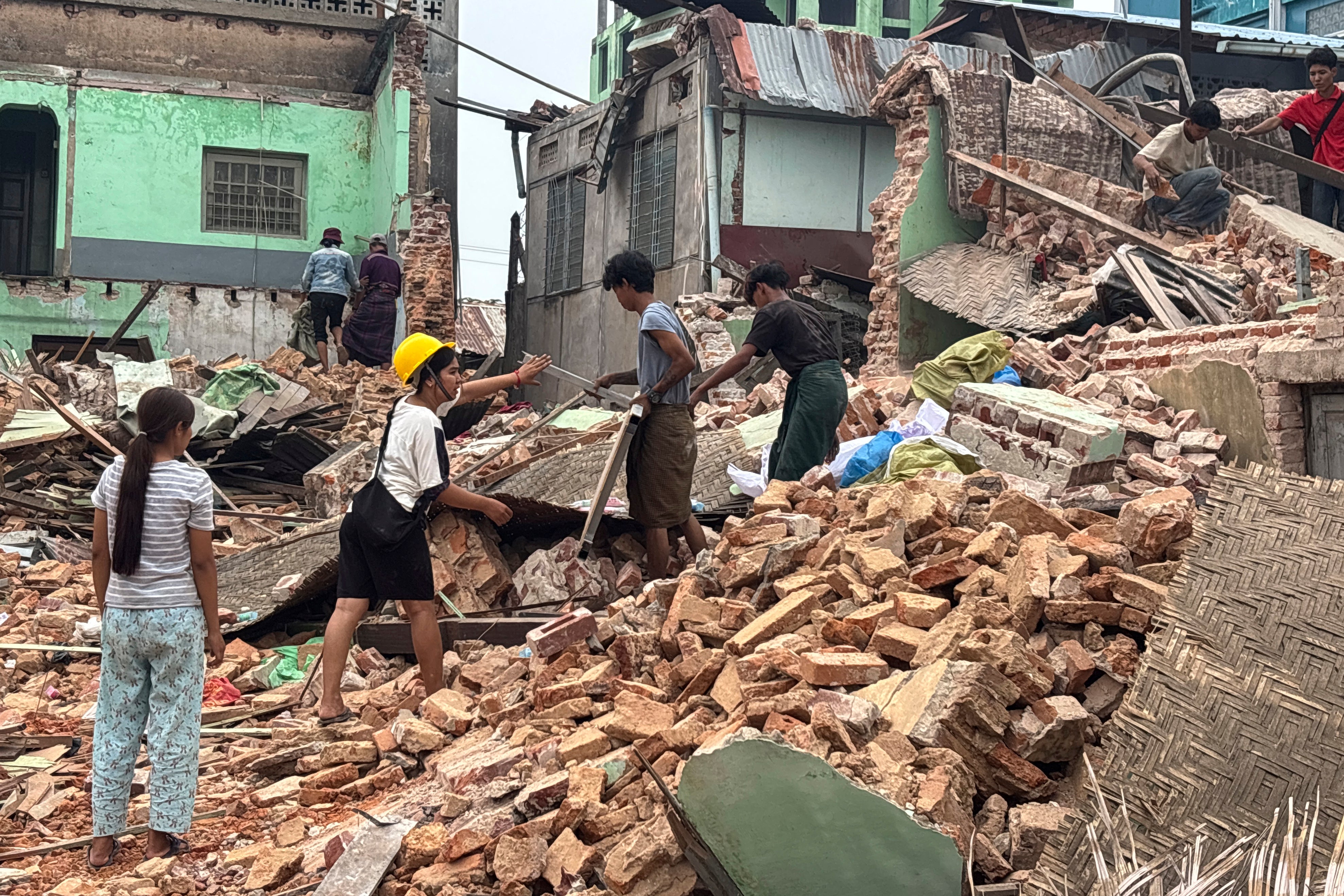Fighting continued across Myanmar despite ceasefire declarations by both the military junta and its opponents, days after a catastrophic earthquake killed more than 3,600 people.
A powerful 7.7-magnitude earthquake struck the country on 28 March, devastating six states and regions, damaging infrastructure, and cutting off entire communities from basic services.
More than 17 million people live in affected areas, with many lacking access to food, clean water, shelter, and medical care, according to the United Nations Office for the Coordination of Humanitarian Affairs (Ocha).
This comes as at least 61 attacks were reported in Myanmar since the quake. Of these, 16 were carried out since the military announced ceasefire took effect on 2 April, reported the Office of the United Nations High Commissioner for Human Rights on 4 April.
The National Unity Government (NUG) – a shadow administration formed in opposition to the junta – accused the military on Saturday of launching 63 airstrikes and artillery assaults since the earthquake, killing at least 68 civilians, including 15 women and a child.

Rescue operations are now giving way to relief and recovery efforts, with international search teams from India, Singapore and Malaysia having returned home.
The Myanmar Fire Services Department confirmed on Monday that 10 bodies were recovered from the debris of a collapsed building in Mandalay, the country’s second largest city. In capital Naypyitaw, locals were seen collecting wood from damaged homes amid rainfall, while soldiers cleared rubble from Buddhist monasteries.
Major General Zaw Min Tun, spokesperson for Myanmar’s military government, said the confirmed death toll had reached 3,600, with over 5,000 injured and 160 still missing.
He reported that 653 people had been rescued with the help of 1,738 personnel from 20 countries. The earthquake has been officially designated as “the Big Mandalay Earthquake” for future reference.
The humanitarian situation is deteriorating rapidly. "Entire communities have been upended," Ocha said in a situation report, highlighting the collapse of water, sanitation, and healthcare systems.
It warned that those left homeless now face extreme temperatures and early rains, particularly in Mandalay, where up to 80 per cent of buildings are estimated to have collapsed.
Despite temporary ceasefires announced by both the military and its opponents to enable relief efforts, armed conflict has continued.
The civil war, triggered by the military’s 2021 coup that ousted the elected government of Aung San Suu Kyi, has intensified in recent years. A broad coalition of armed groups, including the NUG, had declared a temporary halt to offensive actions to allow humanitarian access.
The Three Brotherhood Alliance, comprising ethnic minority groups including the Ta’ang National Liberation Army (TNLA) and Arakan Army, also issued a unilateral truce on 1 April.
The military regime responded with its own ceasefire announcement on 2 April, promising to pause hostilities until 22 April. However, all parties maintained the right to defend themselves if attacked.
The Karen National Union, one of Myanmar’s oldest ethnic armies, condemned the military’s attacks during a national crisis, saying the junta was “deploying forces to attack its people” instead of focusing on relief.
Meanwhile, the army has blamed rebel forces for violating ceasefires. “We are carrying out relief and assistance efforts for the people affected by the earthquake. I am saying this to make everyone aware of the ceasefire violations at a time like this,” said Major General Zaw in a message to journalists.
"We will respond if military bases are attacked without reason.”

The UN High Commissioner for Human Rights, Volker Türk, has called for an immediate end to military operations and unrestricted humanitarian access.
“In the days following the deadly earthquake… the Myanmar military continued operations and attacks, including airstrikes, some of which were launched shortly after tremors subsided,” said his spokesperson, Ravina Shamdasani, in Geneva on Friday.
Some of these attacks allegedly used adapted paragliders – operatives flying with motorised fans strapped to their backs to drop explosives on communities.
UN emergency relief coordinator Tom Fletcher arrived in Myanmar on Friday to assess the damage and support aid efforts. After meeting teams in Yangon, Mr Fletcher travelled to Mandalay, where he praised frontline responders who had continued their work despite suffering personal losses.
Speaking from Mandalay on Saturday, the UN humanitarian chief described the dire scene: “[People] need food. They need water. They need the power back on. They’re telling me they need shelter.”
The crisis is deepening as aftershocks continue to rattle the region, including a 4.9 magnitude tremor recorded over the weekend. “People are living with that trauma,” Mr Fletcher said in a video message, according to BBC Burmese.
Even before the earthquake struck, nearly 20 million people in the region were already in need of assistance.
“It’s a compounding crisis,” he said. “It’s earthquake, on top of conflict, on top of huge existing need.”
The UN Security Council has urged the creation of safe conditions for the delivery of aid, stressing the need for rapid humanitarian assistance and welcoming the efforts of Asean, UN agencies and international partners in providing life-saving support.
Additional reporting by agencies
First they faced bombing during Myanmar’s civil war. Then came the earthquake
China and neighbours at catastrophic quake risk as region enters new seismic phase
UN urges relief efforts in Myanmar as earthquake death toll crosses 3,000
Thailand ignores protests to welcome Myanmar’s junta leader
Volcano erupts in Philippines sending ash 4km into the sky
Woman at centre of Netflix crime documentary charged with fraud in Singapore







